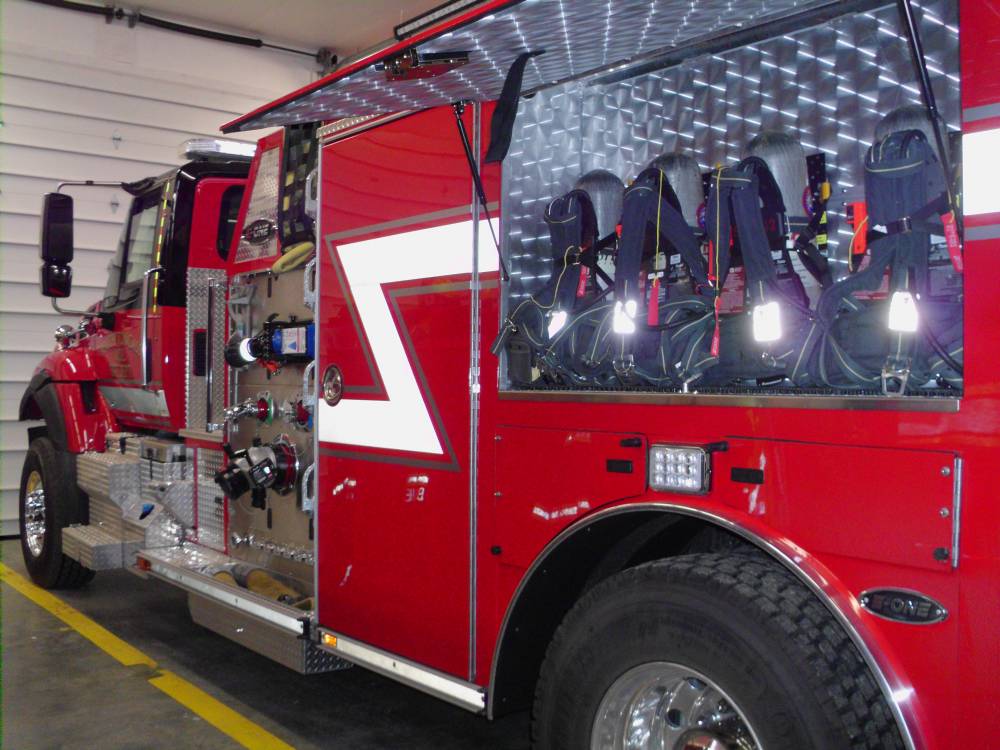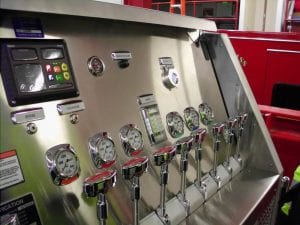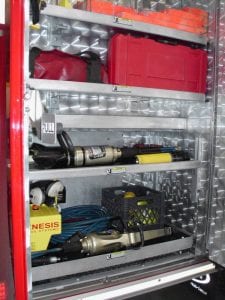The South Tongass Volunteer Fire Department acquired a new fire truck in October and it soon will be in service. The department chief helped drive the rig cross-country to bring it to Ketchikan.
It isn’t an extravagant fire truck, but a much-needed replacement for the South Tongass Fire Department’s 20-year-old rig. Fire Chief Steve Rydeen says following the long road trip from Florida to Alaska, the new truck still needed some outfitting and wiring work before it could go into service.
“We didn’t go fancy. We went with what we basically had, a commercial chassis, which keeps the cost down, and then our basic layout for the box on the back. If we would have gone with a custom chassis, it would have increased the cost about $200,000.”
Rydeen says the fire truck cost $384,000 with about $6,000 more spent to bring it to Alaska and get it outfitted. While there are several fire engine manufacturers throughout the Lower 48, Rydeen says they decided to purchase the truck from the manufacturer E-ONE, located in Ocala, Florida.
“Everything else we have is E-ONE. So our personnel, because they’re volunteer, they’re not career, there’s very little difference in our training for it so they’re familiar with the apparatus. That was part of the decision of keeping it that way.”
Rydeen says that manufacturer also had a lower price. He and volunteer Dennis Spurgeon flew to Ocala, Florida, in October, drove the vehicle to Seattle, and put it on the barge to Ketchikan. Rydeen says they originally planned to go through Atlanta, Georgia, and travel diagonally cross country to the West Coast, but because they left late at night, they decided to pass through New Orleans and then head north.
“So we went through Pensacola and Panama City and some of the areas hit by the hurricane. And even at night, when it was dark, you could still see some of the destruction that occurred.”
He says they only intended to drive a few hundred miles the first night, but ended up having to drive 500 miles before they could find a hotel with vacancies, arriving at one in the morning.
Rydeen says by driving it themselves, they saved more than $2,500 in transportation and shipping. He says this also gave them time on the truck to figure out some of its idiosyncrasies and any needed minor repairs.
Rydeen says the new rig carries 750 gallons of water and has a foam system to handle all types of fire.
“Whether it’s car fires or petroleum fires or wildland fires, the foam we use is good for all of those.”
The 31-foot truck also is 4-wheel drive, making the ride bumpy, but allowing it to handle all road conditions. Rydeen says all equipment was in place and each compartment categorized.
“The air packs are in one compartment, we have all our gas equipment in one compartment so that nothing gets contaminated with the smell of gasoline. In the back we have a fan. We have all the hose. Never run over a fire hose because it’ll damage it and then we have to actually shut down operations and change it out because it will fail.”
He says the apparatus has about a quarter of a mile of hoses. Other features include ladders, pipe poles and equipment for automobile extractions. Rydeen says everything is organized so equipment is easy to locate.
Before the new rig goes into service, Rydeen says firefighters are training with it. He says training should be completed by the end of December with the new truck rolling out in early January. Rydeen says the fire truck it’s replacing will find a new home in a small, rural community.








